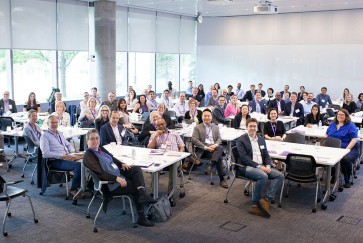New research from Northwestern University's Kellogg School of Management finds that balanced professional networks are more important than individual talent when it comes to high-risk decision making.
The study, published in Nature Communications, is the first longitudinal study to prove several key tenets of structural balance theory (SBT), which provides an analytical framework to characterize how relationships change over time. SBT consists of four primary rules for relationships among individuals:
- A friend of a friend is a friend
- A friend of an enemy is an enemy
- An enemy of an enemy is a friend
- An enemy of a friend is an enemy
When all of these conditions are met, a network is said to be balanced. Through a two-year study of day traders, the researchers found that (A) workers gravitate toward a state of balance in their relationships; and (B) performance improves when there is a high level of balance.
“This data shows that companies reap the benefits when conflict among employees is reduced,” said corresponding author Brian Uzzi, the Richard L. Thomas Professor of Leadership and Organizational Change. “There are certain types of conflict that can’t resolve themselves. This work can help managers identify those conflicts and actively step in to resolve them, ultimately leading to better performance.”
From 2007 to 2009, researchers analyzed day traders’ instant messages to determine the relationships among traders and compared those relationships to performance data for individual traders, controlling for factors including market volatility and work days. They found that the traders with the highest level of balance in their networks also made the best trades, regardless of the objective level of talent of any individual trader.
“We suspect that conflict in networks monopolizes some portion of workers’ mental energy,” Uzzi said. “Resolving that conflict frees up mental energy to make better decisions and perform at a higher level.”
The findings of this study apply to individuals who engage in extensive high-risk decision making, particularly in situations where polarization is common, such as politics or in the military.
Further research is needed to determine whether the same rules hold in other work situations, such as creative and innovative endeavors.
Omid Askarisichani and Jacqueline Ng are co-first-authors of the paper, titled “Structural Balance Emerges and Explains Performance in Risky Decision-Making." Francesco Bullo, Noah Friedkin and Ambuj K. Singh also contributed.


